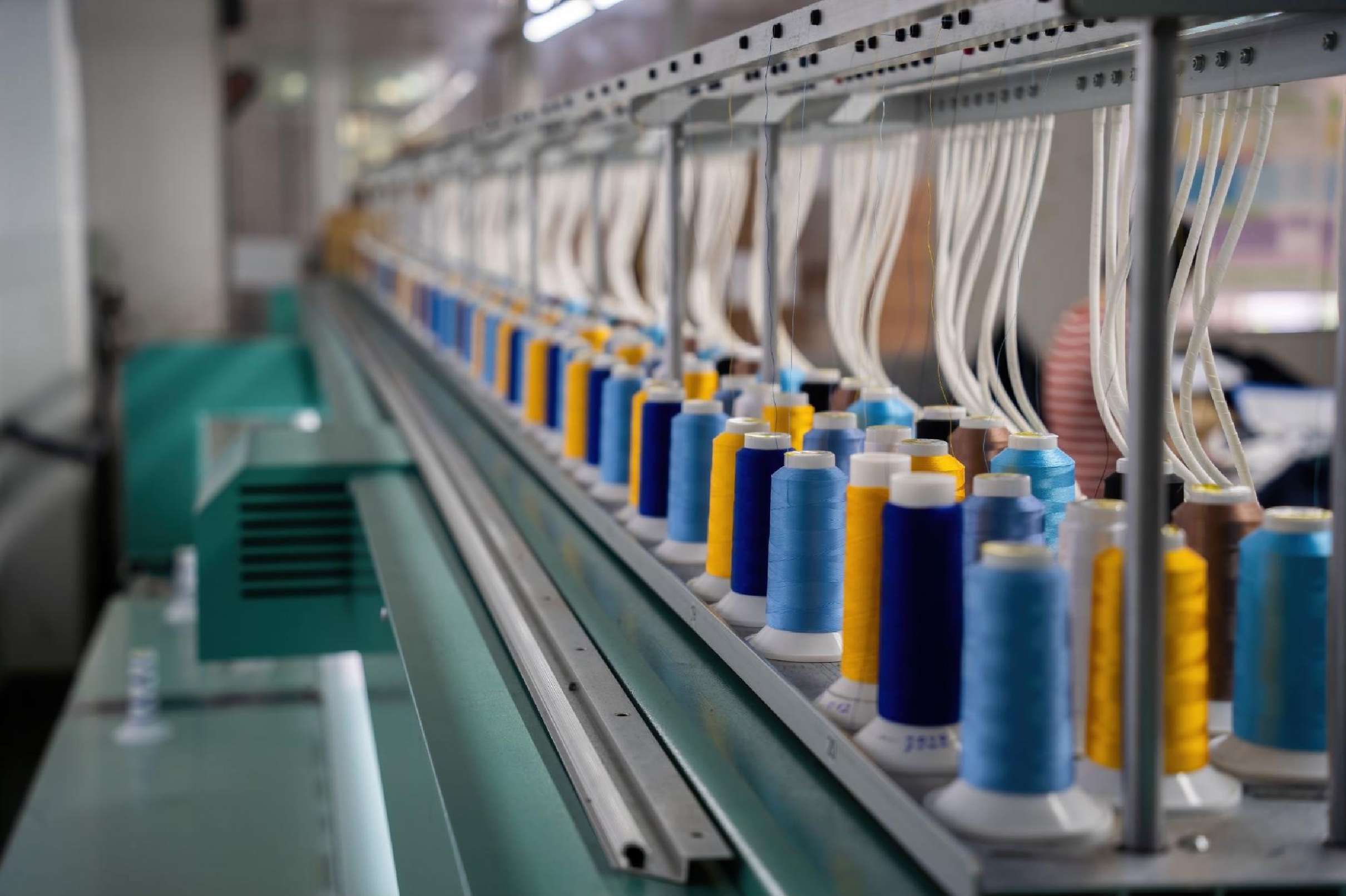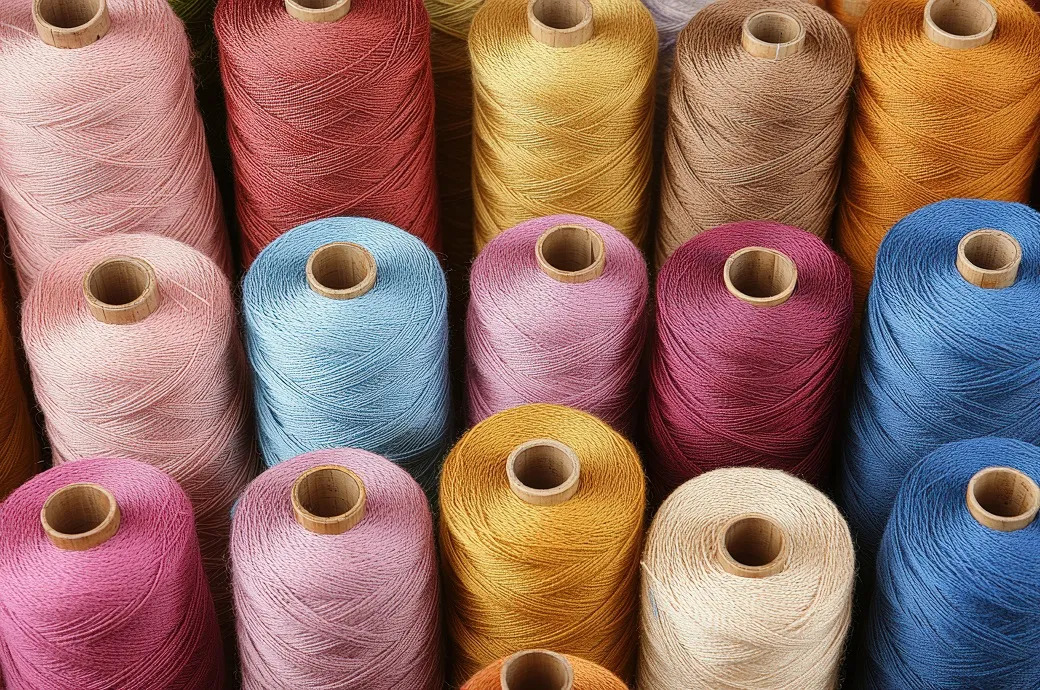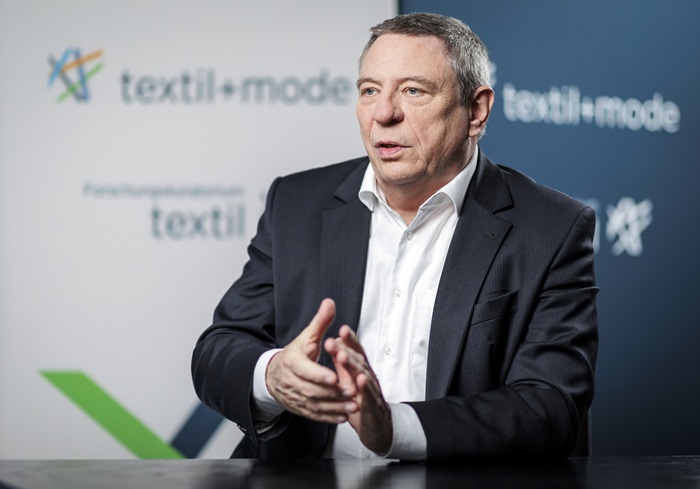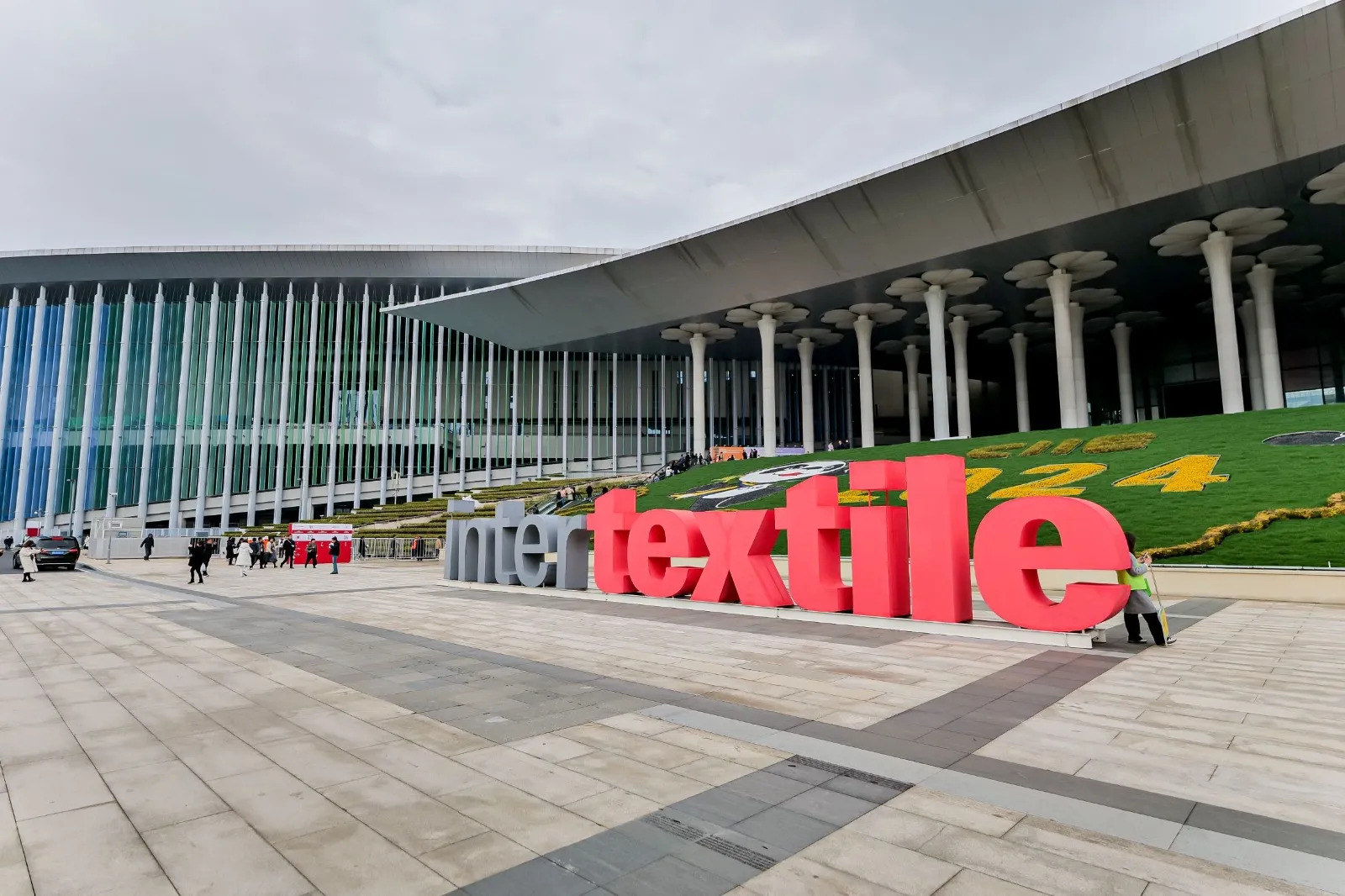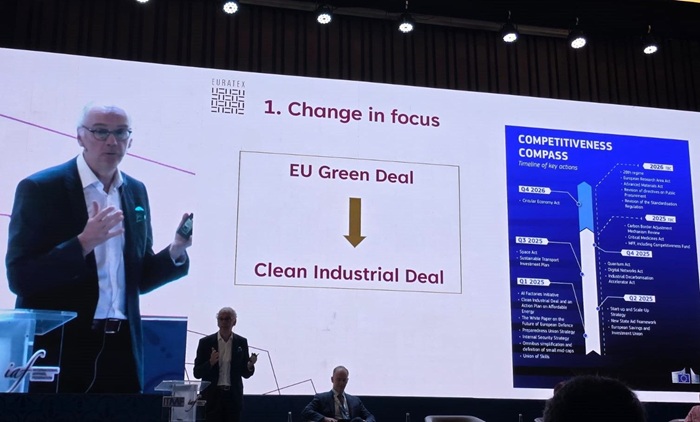FW
Olalade Majekodunmi, National Coordinator, Nigerian Cotton Cooperative Society (NCCS) has applauded the National Economic Council's (NEC)’s plan to establish a Cotton, Textile, and Garment (CTG) Development Board, along with initiating a comprehensive ₦90 billion (Nigerian Naira) agribusiness and livestock plan.
According to Majekodunmi, overseen by Kashim Shettima, Vice President, the project will pave the way for Nigeria’s industrial and agricultural revival besides transforming the industry.
Also serving as the Managing Director, House of Dorcas Integrated Services (HDI), Majekodunmi described these initiatives as a bold and strategic move.
This approval signals a strong commitment from the Federal Government to revitalize Nigeria’s critical industrial sectors and drive economic diversification under the Federal Government’s Renewed Hope Agenda, she said.
A central coordinating body for Nigeria’s cotton-to-garment value chain, The CTG Development Board will encourage investments, policy alignment, and collaboration among stakeholders to restore the sector’s historical role in job creation and export growth, she added.
Aneibi Chimugu, Chief, Nigeria Cotton Society alongwith the entire CTG Stakeholders community also commended the Federal Government for this visionary investment.
The initiative embodies a practical and impactful approach to rebuilding Nigeria’s economic foundation – leveraging agriculture and manufacturing to create jobs, enhance food security, and foster sustainable growth, he added.
B.I.G. Yarns, a specialist in polyamide, polypropylene, and polyester carpet yarns, has announced a €25 million investment in its French production site to reinforce its innovation and sustainability efforts. This strategic move aims to strengthen the company’s leadership in one-step 3-ply yarn technology and enhance its service to commercial, automotive, residential, and technical sectors.
The investment will support the installation of advanced bulked continuous filament (BCF) lines, forming part of a next-generation machine park. This upgrade enables B.I.G. Yarns to produce smaller, more flexible batches with greater energy efficiency, meeting growing market demands for design versatility and sustainable manufacturing. The company's 1-step 3-ply yarns offer increased freedom in color, contrast, and texture key benefits for carpet tile makers seeking high-quality, customizable solutions.
General Manager Emmanuel Colchen emphasized the company's commitment to delivering top-tier, sustainable yarn products: “This investment underscores our long-term commitment to the European market and our ability to deliver superior and sustainable yarn solutions that meet the evolving needs of our customers.”
Despite global competition, particularly from manufacturers in Asia and the Middle East, B.I.G. Yarns is doubling down on its European roots. Its facility's location, within 500 km of key customers, enables faster delivery and stronger collaboration, ensuring high service levels.
B.I.G. Yarns invites industry professionals to explore its innovations at Clerkenwell Design Week 2025, from May 20–22 in London. Attendees will experience the latest in sustainable yarn design and discover how the company’s advanced 3-ply yarns can elevate carpet tile aesthetics and performance.
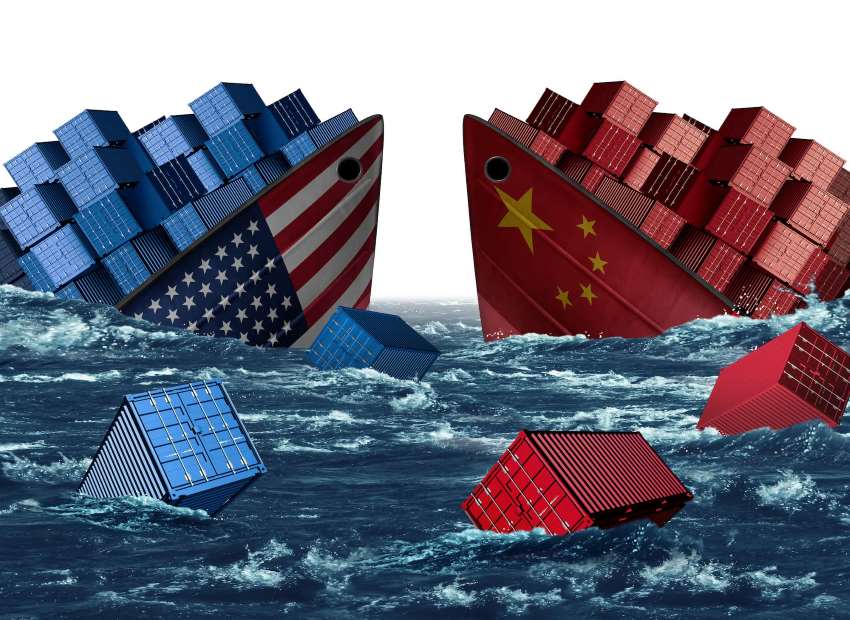
A recent analysis by David Birnbaum reveals a significant shift in China's export focus, specifically concerning the US’ as a major destination for Chinese goods. While the US remains a big player in certain sectors, particularly garments, the overall importance of the US market to China's economy is waning.
Declining US trade significance
Data indicates a clear downward trend in the significance of the US market to China's overall GDP. Twenty years ago, trade with the US accounted for 10.5 per cent of China's GDP. However, by 2024, this figure has dropped dramatically to just 3.9 per cent and continues to decline. This suggests that while trade with the US is still substantial, its relative importance to the Chinese economy has diminished considerably.
Despite the overall decline in the importance of the US market, China remains a dominant player in garment exports to the US China holds a significant market share of 20.4 per cent by value and 34.5 per cent by units in garment exports to the US. In fact, China's garment exports to the US are growing, touching 22.6 per cent in 2024. This suggests that China is actively working to maintain its position in this specific sector, even as its overall reliance on the US market decreases.
Diversification of export markets
While the US is an important garment importer, China's garment exports to other major importing regions – the EU, Japan, Korea, and the UK – collectively surpass those to the US. Exports to these other major importers totalled 39 per cent, significantly higher than the US. This diversification of export markets highlights China's strategy to reduce its dependence on any single market and capitalize on opportunities across various regions.
China's garment exports to key markets
To provide a clearer picture of the shifting export dynamics, let's analyze the data on China's garment exports to key markets (EU, Japan, Korea, UK, and US). The table below represents a qualitative comparison, showing the general trend of garment exports to these regions.
|
Importing Region |
2005 (Approx. % of Total Garment Exports) |
2015 (Approx. % of Total Garment Exports) |
2024 (Approx. % of Total Garment Exports) |
Trend (2005-2024) |
|
EU |
16% |
22% |
16% |
Relatively Stable |
|
Japan |
20% |
15% |
13% |
Decreasing |
|
Korea |
15% |
5% |
5% |
Decreasing |
|
UK |
2% |
3% |
4% |
Increasing Slightly |
|
US |
N/A (See Graph 2) |
N/A (See Graph 2) |
22.6% (of exports to US) |
Increasing (to US) |
Beyond direct finished garment exports, it's essential to consider China's increasing exports of raw materials (fibers, yarns, and fabrics) to Asian and ASEAN countries. This trend is crucial for several reasons:
- Regional production networks: China has become a major supplier of textile inputs to neighboring countries. These countries then use these materials to manufacture garments and other textile products.
- Indirect exports: A significant portion of the finished goods produced in these Asian/ASEAN countries (using Chinese materials) are ultimately exported to markets like the US, the EU, and others. This means that even if the US imports fewer direct garment exports from China, it still consumes products made with Chinese materials. This is what we call "indirect exports."
- Value chain control: By controlling the supply of raw materials, China maintains a powerful position in the textile and apparel value chain.
- Data challenges: Tracking the precise flow and final destination of Chinese raw materials can be complex, making it difficult to quantify the exact impact of indirect exports.
David Birnbaum's analysis highlights a crucial transition in China's export dynamics. While the US remains an important market, particularly for garments, its overall significance to China's economy is diminishing. China is actively diversifying its export markets, focusing on other major importers and leveraging indirect exports through raw material supply chains. This realignment reflects China's adaptation to the evolving global trade landscape and its continued influence in the global textile and apparel industry.
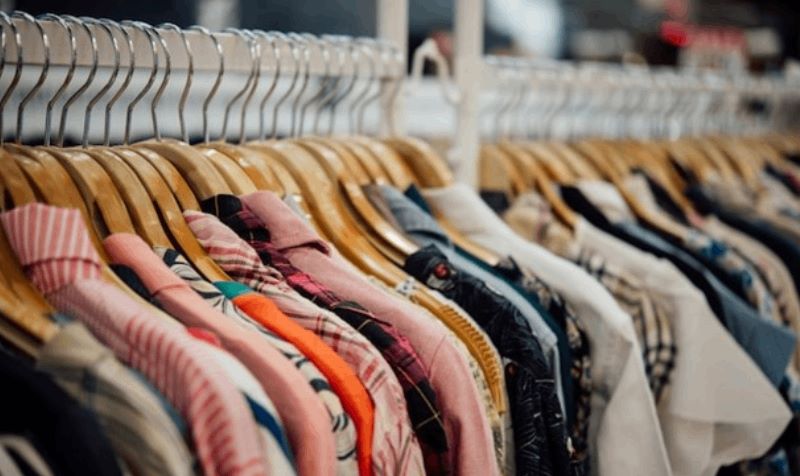
Wazir Advisors April 2025 ‘Apparel trade scenario in key global markets and India’ captures the evolving dynamics of global apparel trade and retail. Data from major supplier and buyer nations points toward a steady recovery in demand, even as underlying economic signals hint at emerging challenges. Here’s a closer look at the key movements in imports, exports, retail sales, and economic sentiment this month.
Apparel imports sees solid growth in major markets
February 2025 brought positive news for apparel imports across key global markets. In the US, apparel imports rose to $6.4 billion, marking a 3 per cent year-on-year (YoY) increase. Though modest, this growth suggests continued resilience in American consumer demand.
The European Union posted a more dramatic surge, with apparel imports soaring 23 per cent YoY to $8.0 billion. Retailers appear to be replenishing inventory aggressively, possibly in anticipation of strong spring and summer sales.
Meanwhile, the UK recorded an impressive 31 per cent YoY jump in apparel imports, reaching $1.7 billion. This sharp increase could be linked to both restocking efforts and a growing consumer appetite, particularly through online channels. Japan, too, showed steady progress, with apparel imports climbing 6 per cent YoY to $1.8 billion.
Exports renewed momentum, led by Vietnam and Bangladesh
March 2025 was a strong month for major apparel exporting nations. China, the world’s leading apparel supplier, reported exports worth $10.9 billion, a 9 per cent increase from the previous year.
Bangladesh continued its upward trajectory, with apparel exports rising 10 per cent YoY to $3.4 billion, consolidating its role as a key sourcing destination for global brands.
In a standout performance, Vietnam posted a remarkable 20 per cent YoY increase in exports, reaching $2.4 billion. The country's consistent investment in manufacturing capabilities and diversification strategies appears to be paying off.
On the other hand, India’s apparel exports remained flat at $ 1.5 billion, showing no year-on-year change. While stable, India's performance highlights the need for greater competitiveness and agility in responding to global demand patterns.
Retail sales show steady gains
Retail sales data for March 2025 reflect moderate but steady growth across major markets. In the US, apparel store sales were estimated to be 2 per cent higher than in March 2024. Home furnishing stores outpaced apparel slightly, with 4 per cent growth year-on-year. The data suggests a cautiously optimistic consumer environment, although it is tempered by broader economic concerns.
The UK also reported positive trends. Apparel store sales totalled £4.3 billion in March 2025, a 2 per cent rise compared to the same month a year earlier. More notably, online sales of clothing surged by 14 per cent in the first quarter of 2025 compared to Q1 2024, underlining the continued migration of shoppers to digital platforms.
In India, apparel retail sales grew by 4 per cent in February 2025 over the previous year. This stable growth indicates sustained consumer confidence and a resilient domestic market.
US macroeconomic indicators a mixed picture
Despite steady retail performance, broader economic indicators from the US reveal growing consumer unease. Inflation eased to 2.4 per cent in March 2025, providing some relief to households and boosting disposable income. However, the improvement in inflation was overshadowed by a noticeable decline in consumer confidence.
The consumer confidence index dropped sharply to 92.9, down from 102.7 in February. The decline reflects growing uncertainty about economic prospects, potentially linked to job market concerns, geopolitical tensions, or interest rate volatility.
This juxtaposition — cooling inflation but falling consumer confidence — suggests that while consumers currently have slightly more spending power, they are becoming more cautious with their expenditures, a trend that could influence apparel demand in the months ahead.
Source Fashion, Europe’s leading responsible sourcing show, returns from 8th-10th July 2025 at its new, larger venue, The Grand Hall, Olympia London, to accommodate its rapid 30 per cent season-on-season growth. Now in its third year, the event shows no signs of slowing down, with registration opening on 29th April 2025.
The global platform will feature exhibitors from over 25 countries, including manufacturing leaders China, India, Bangladesh, Sri Lanka, and Turkey, alongside growing participation from the UK and emerging African markets. As the gateway to the UK fashion industry, Source Fashion connects fully audited international manufacturers and suppliers with UK retailers, brands, wholesalers, and corporates committed to responsible sourcing.
The February 2025 edition witnessed a record 32 per cent visitor increase, welcoming buyers, sourcing managers, and designers from major names like John Lewis, Harrods, Next, Asos, Chanel, and River Island.
Suzanne Ellingham, Event Director, said, “Source Fashion is becoming Europe’s largest manufacturing trade show, championing quality, responsibility, and transparency. Our technology innovations this season will make finding and connecting with manufacturers even more efficient.”
The event’s acclaimed content programme will return, featuring the Source Debates stage and live catwalks. Sessions will address innovation, growth, sustainability, and profitability, with leaders sharing real-world examples of responsible sourcing success.
Simon Platts, Founder of SP&KO Consultancy, praised the event, noting, “Source Fashion builds a vital community. It shows how better buying practices can boost both sustainability and profits. It’s a must-attend for the industry.”
Source Fashion July 2025 promises a dynamic, inspiring showcase for the future of ethical fashion sourcing.
Following Earth Day, luxury group Kering has unveiled a comprehensive Water-Positive Strategy, pledging to achieve a Net Water-Positive Impact by 2050 and measurable improvements in key water hotspots by 2035. Moving beyond reducing water consumption, Kering is aiming to actively restore and regenerate water sources and surrounding ecosystems where it operates, setting a new benchmark for sustainability in the luxury sector.
The Water-Positive Strategy is the latest step in Kering’s science-based sustainability roadmap, addressing the interconnected challenges of climate change, biodiversity loss and water scarcity. By leveraging a Climate-Nature-Water nexus, the Group seeks to regenerate ecosystems, foster collaborative opportunities, and boost resilience across its value chain. Focusing on 10 priority freshwater basins most impacted by its activities, Kering plans to work closely with local stakeholders to enhance water quality, quantity and accessibility.
To drive this transformation, Kering has outlined three major programs. The Water-Positive Raw Materials initiative will prioritize sourcing materials that reduce pressure on ecosystems, including recycled fabrics, innovative alternatives and products from regenerative agriculture, helping to reduce pollution and replenish watersheds. The Water-Positive Stewardship Program will elevate water management across Kering’s operations and supply chain, encouraging strategic suppliers to adopt best practices and technologies like chrome-free tanning and water-efficient processing to improve water resources.
Additionally, Kering will establish Water Resilience Labs in each of its priority basins by 2035, starting with the Arno Basin in Tuscany in 2025. These Labs will engage suppliers, other industries, local communities, indigenous groups and public authorities to regenerate healthy freshwater ecosystems through collective action. The Arno Basin, a major water resource for Kering’s tanneries and other manufacturing sectors, will serve as a model for water-positive collaboration and innovation.
Marie-Claire Daveu, Chief Sustainability and Institutional Affairs Officer at Kering, emphasized the urgency of transformative water stewardship. She stated that Kering’s approach moves beyond water reduction to regeneration, aiming to deliver tangible, water-positive outcomes that enhance social, environmental and economic resilience, and ultimately contribute to the global availability of clean water.
As the demand for personal protective equipment (PPE) increases globally, particularly for security forces, Karl Mayer’s Technical Textiles division is advancing solutions for producing ultra-light, high-performance fabrics.
The company has focused on creating multiaxial non-crimp fabrics that provide protection while maintaining comfort, a key factor for wearability. Jurgen Troltzsch, Special Specification Project Manager, explains that the company has been refining fabric solutions for several years, using aramid fibres for strong, lightweight protective materials.
These fibres, processed through a two-stage system involving the UD 700 fibre spreading machine and the Cop Max 5 multiaxial warp knitting machine, form fabrics with individual layer weights as low as 90 g/m².
Despite these advancements, the team sought to reduce weight further for enhanced comfort. They turned to ultra-high molecular weight polyethylene (UHMWPE) fibres, which are lighter than aramid yet offer equal energy absorption from projectiles.
Using the UD 700 fibre spreading system, UHMWPE fibres are spread into ultra-thin tapes, some as light as 30 g/m² per layer. The fibres are laminated with a 10 µm polymer film to fix the layers and prevent breakage during further processing.
In testing, cross-plies made from UHMWPE fibres met rigorous standards, including the US NIJ Standard 0101.06 for bulletproof materials. The Karl Mayer process enables the production of lighter, more cost-effective protective textiles without the need for liquid chemicals or energy-consuming processes. This innovation in multiaxial technology is already attracting attention from customers seeking advanced PPE solutions.
India’s textile and apparel sector is undergoing a major transformation, driven by digitisation, sustainability, smarter production, and responsible manufacturing. At the forefront of this shift stands Gartex Texprocess India - Mumbai, set to unfold the next chapter for the industry. Organised by Messe Frankfurt Trade Fairs India Pvt Ltd and MEX Exhibitions Pvt Ltd, the event will run from 22 to 24 May 2025 at the Jio World Convention Centre, Mumbai.
With over 125 exhibitors representing 300-plus brands and growing international participation, the expo promises a panoramic showcase of innovations shaping the future of textile manufacturing. Strong global representation from China, Italy, Japan, Korea, Singapore, and a special pavilion from Taiwan will complement leading Indian companies like Balaji Sewing Machines, DCC, EH Turel, Mexum, Pantone, and Sky Enterprises. International brands such as Epson, Kornit, and MACPI International will also feature, either directly or through partners.
Focused on technology integration, automation, and responsible manufacturing, the event will feature a range of cutting-edge solutions for the garment and textile sectors. Curated knowledge sessions will further highlight new directions in sourcing, production, and innovation.
The Denim Show, powered by the Denim Manufacturers Association, will bring together India’s major denim manufacturers and mill owners. As demand for eco-conscious denim rises, the show will offer critical insights into the sector’s evolution towards sustainability and style.
Adding to the dynamic display, the Fabrics and Trims Show and Screen Print India - Textile will spotlight innovations in fabrics, trims, digital screen printing, and accessories. With 25-plus new entrants across expanding categories, the show is set to attract denim designers, boutique owners, apparel brands, garment manufacturers, sourcing heads, and more.
Himani Gulati, Director, MEX Exhibitions Pvt Ltd, remarked, “Gartex Texprocess India is not just a trade fair, it’s a catalyst for transformation. It reflects the rising strength of Made in India on the global textile map.”
Raj Manek, Executive Director and Board Member, Messe Frankfurt Asia Holdings Ltd, added, “India’s textile industry is evolving rapidly with intelligent automation and cleaner manufacturing practices. Gartex Texprocess India - Mumbai is the platform to witness these innovations that will define the future.”
Gartex Texprocess India 2025 is poised to be the ultimate confluence of technology, talent, and trade, reaffirming India’s ascent as a global textile powerhouse.

The recent escalation of reciprocal tariffs between the US and China has sent ripples through the global fashion, apparel, and textile industries, with Chinese manufacturers and consumers alike bracing for impact. While anxieties about reduced export volumes to the US are palpable, a rise in nationalistic sentiment and a shift towards domestic consumption are reshaping the landscape.
A nation united, yet wary
Social media platforms like Weibo and WeChat are filled with discussions regarding the trade tensions. While overt anti-American rhetoric remains moderated, a strong sense of national pride and a determination to bolster domestic industries are evident. "We must rely on ourselves," echoed a post on Weibo, garnering thousands of likes. "Our strength lies in our ability to adapt and innovate."
However, trade bodies like the China National Textile and Apparel Council (CNTAC) have expressed concerns over the long-term implications. "The impact on export-oriented enterprises, especially SMEs, will be significant," a CNTAC spokesperson noted in a recent press conference, citing potential job losses and reduced profit margins. "We are urging the government to provide targeted support," said a CNTAC official press release.
A report from the China Chamber of Commerce for Import and Export of Textiles (CCCT) estimates that the new tariffs could result in a 10-15 per cent decrease in Chinese textile exports to the US within the next 12 months. A survey conducted by a Chinese market research firm, iResearch ‘iResearch Consumer Sentiment Report, 2024’, indicated that while 65 per cent respondents felt a sense of "patriotic duty" to support domestic brands, 40 per cent expressed concerns about potential price increases due to the tariffs. Furthermore, 25 per cent of surveyed individuals stated they would actively seek out non-US brands for apparel and textiles.
Reworking the silk road
To mitigate the risks associated with US tariffs, Chinese textile and apparel manufacturers are actively diversifying their supply chains. This includes
Expanding production in Southeast Asia: Vietnam, Cambodia, and Bangladesh are emerging as attractive alternatives, offering lower labor costs and preferential trade agreements with other markets.
Accelerating automation and technological upgrades: Investments in advanced machinery, robotics, and AI-powered production systems are aimed at enhancing efficiency and reducing reliance on manual labor.
Building robust domestic supply networks: Strengthening partnerships with domestic suppliers and logistics providers to ensure a more resilient and self-reliant supply chain.
A case study of a major textile manufacturer, Youngor Group, in Guangdong province revealed a planned investment of $50 million in automation upgrades over the next two years, with a focus on smart warehousing and robotic assembly lines. They are also establishing new production lines within Vietnam.
According to the Ministry of Industry and Information Technology (MIIT), China's investment in textile-related automation technologies grew by 20 per cent year-over-year in the first quarter of 2024. (Source: MIIT Industry Report, 2024).
The dragon's appetite
China's vast and burgeoning domestic market is seen as a crucial buffer against the impact of US tariffs. The government is actively promoting domestic consumption through various initiatives, including
· "Dual Circulation" strategy: Emphasizing the importance of both domestic and international economic cycles, with a focus on boosting internal demand.
- E-commerce expansion: Leveraging the power of online platforms like Alibaba and JD.com to connect domestic manufacturers with consumers.
- Promoting "Guochao" (national trend) brands: Encouraging the consumption of domestically produced goods that incorporate traditional Chinese cultural elements.
Data from the National Bureau of Statistics shows that retail sales of clothing, footwear, and textiles in China grew by 8.5 per cent in the first quarter of 2024, indicating strong domestic demand. Furthermore, online retail sales of apparel increased by 12 per cent in the same period, highlighting the importance of e-commerce.
Table: Domestic consumption growth
|
Quarter |
Year |
Growth Rate (Clothing, Footwear & Textiles) |
Online Apparel Sales Growth |
|
Q1 |
2024 |
8.50% |
12% |
|
Q4 |
2023 |
7.20% |
9.80% |
|
Q3 |
2023 |
6.80% |
8.50% |
Global brands in the crossfire
Global fashion brands that rely heavily on Chinese manufacturing for their US-bound exports are facing significant challenges. The fear of drastic reduction of buying from China is real. However, the situation is more complex when considering the sales of these same brands within China.
Brands with large-scale production in China for US markets are actively exploring alternative sourcing options. Meanwhile the growing Chinese middle class and their increasing appetite for luxury and international brands represent a significant opportunity. However, brands must carefully navigate the complex interplay of national pride and consumer preferences in China.
For example, a major European sportswear brand, Adidas, while facing potential export disruptions, reported a 15 per cent increase in online sales in China during a recent promotional campaign on Tmall.
Meanwhile, American clothing brand with factories in China are actively diversifying manufacturing to Vietnam and Bangladesh, but cannot ignore the immense market potential within China itself. It's a delicate balancing act for them.
The situation requires global brands to create a delicate balance of maintaining their export supply lines while also capitalizing on the growing domestic market within China. The future of the fashion industry will heavily depend on how efficiently these brands navigate the complexities of this evolving trade landscape.
The fact that many global brands not only sell within China but also source significant portions of their global production from Chinese factories creates an additional layer of complexity. These brands are now facing the challenge of potentially increased production costs due to tariffs, which could impact their profit margins worldwide. Simultaneously, they must navigate the delicate political climate within China, where any perceived shift away from Chinese sourcing could trigger consumer backlash.
A recent analysis by a financial consulting firm highlighted that brands with over 30 per cent of their global sourcing originating from China face the highest risk of supply chain disruption and increased costs. This scenario forces brands to reassess their sourcing strategies, potentially accelerating diversification efforts, but also necessitating careful communication and brand management within the Chinese market.

At a time of evolving trade policies and geopolitical uncertainties, Vietnam and India are looking to deepen their cooperation in the textile and garment sector, recognizing the significant mutual benefits that can be unlocked. A recent statement by Bùi Trung Thướng, Trade Counselor at the Vietnam Trade Office in India, highlighted the strategic imperative for both countries to strengthen their ties, particularly in light of the US's new reciprocal tax policy.
Complementary strengths, shared opportunities
Vietnam, a global garment export powerhouse with exports reaching an estimated $44 billion in 2024, is seeking to diversify its supply chains and reduce its reliance on China, which currently provides 65 per cent of its textile inputs. India, a leading raw materials supplier, especially cotton and yarn, and a country with a rich textile heritage, presents a compelling alternative.
"The synergy between Vietnam's manufacturing prowess and India's raw material abundance is undeniable," states Thướng. "By leveraging the ASEAN-India Free Trade Agreement (AIFTA), Vietnam can significantly reduce material costs, enhancing its competitiveness."
India's strengths extend beyond raw materials. It boasts of a diverse textile industry, encompassing natural fibers like cotton, jute, silk, and wool, as well as synthetic fibers such as polyester and nylon. Its capacity to produce a wide range of blended and technical textiles positions it as a vital partner for Vietnam.
Regional cooperation the way forward
The US' new reciprocal tariff poses a significant challenge to both Vietnam and India, potentially increasing export costs. This necessitates a shift towards regional cooperation and diversification into other FTA markets, including the EU, Japan, and South Korea.
To solidify this partnership, Thướng has proposed several initiatives: First proposal is the setting up of a $500 million ‘Joint Investment Fund’ to establish spinning mills in southern India and northern Vietnam, along with smart fabric research centers in Ho Chi Minh City and Bangalore. Another proposal is a bilateral preferential tax agreement reducing import-export costs and enhancing competitiveness. Thướng propose setting up of a ‘Vietnam-India Textile Innovation Fund’ supporting joint research on green technologies, technical textiles, and recycled materials. Vietnam can import shuttleless looms from India, which are 30-40 percent cheaper than European imports.
The ASEAN-India Free Trade Agreement (AIFTA), signed in 2009 and implemented in 2010, plays a crucial role in facilitating trade between the two nations. It has led to significant reductions in tariffs, boosting bilateral trade. The AIFTA has provisions that allows for preferential tariff rates on numerous goods, including many textile products. This directly assists in the reduction of costs, that Thuong spoke of.
Table: India-Vietnam textile import and export
|
Year (Jan-Nov) |
Category |
India exports to Vietnam |
India imports from Vietnam |
Notes |
|
2022 |
Total Textile Trade |
333.884 |
302.204 |
Overall trade volume. |
|
Yarn |
118.367 |
82.907 |
Increasing Indian yarn exports. |
|
|
Fabric |
77.928 |
106.976 |
Vietnam fabric export to India higher than India's to Vietnam. |
|
|
Fibre |
137.589 |
112.32 |
High volume of fiber trade. |
|
|
2023 |
Total Textile Trade |
327.282 |
247.306 |
Trade values fluctuated. |
|
Yarn |
151.578 |
74.298 |
Continued yarn export growth. |
|
|
Fabric |
71.198 |
75.865 |
Fabric trade remained relatively stable. |
|
|
Fibre |
104.505 |
97.143 |
Fiber trade remained high. |
|
|
2024 |
Total Textile Trade |
404.446 |
212.76 |
Indian textile export values are greater than import values. |
|
Yarn |
173.408 |
55.908 |
Strong growth in yarn exports. |
|
|
Fabric |
67.319 |
76.984 |
Fabric trade remained similar to the previous year. |
|
|
Fibre |
163.719 |
79.866 |
Increased fiber export from India. |
A strong partnership between Vietnam and India in the textile and garment sector holds immense potential. By diversifying supply chains, leveraging FTA benefits, and fostering innovation, both nations can navigate global trade challenges and secure a prosperous future. This collaboration represents a strategic move towards building resilient and mutually beneficial economic ties.

